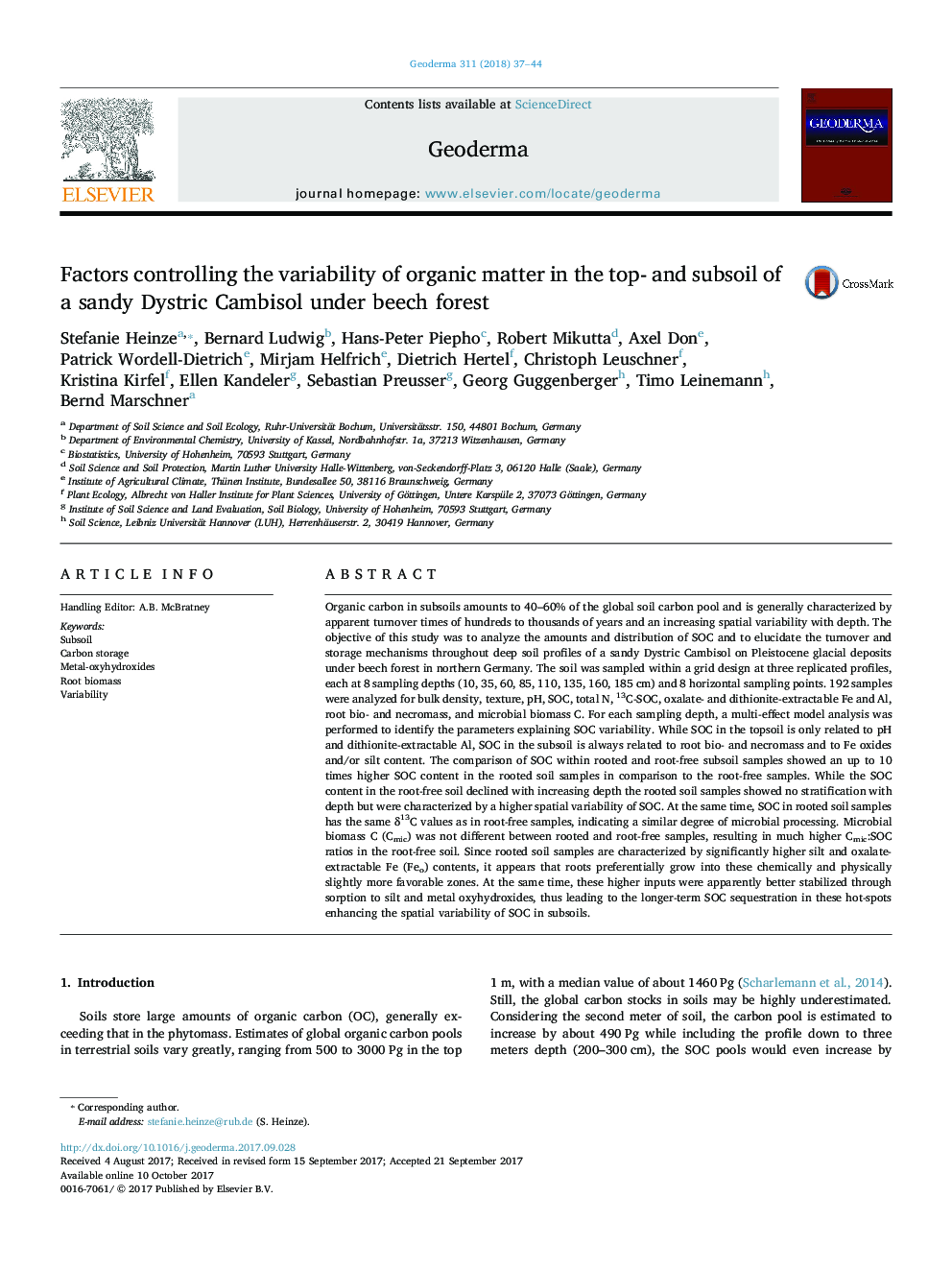| کد مقاله | کد نشریه | سال انتشار | مقاله انگلیسی | نسخه تمام متن |
|---|---|---|---|---|
| 5770442 | 1629406 | 2018 | 8 صفحه PDF | دانلود رایگان |

- Spatial variability of SOC increases with increasing depth.
- Cmic:SOC-ratios are lower in rooted samples indicating poorer microbial growth substrate than in the root-free samples.
- Textural and mineralogical variability in subsoil influences both root distribution and SOC stabilization.
Organic carbon in subsoils amounts to 40-60% of the global soil carbon pool and is generally characterized by apparent turnover times of hundreds to thousands of years and an increasing spatial variability with depth. The objective of this study was to analyze the amounts and distribution of SOC and to elucidate the turnover and storage mechanisms throughout deep soil profiles of a sandy Dystric Cambisol on Pleistocene glacial deposits under beech forest in northern Germany. The soil was sampled within a grid design at three replicated profiles, each at 8 sampling depths (10, 35, 60, 85, 110, 135, 160, 185 cm) and 8 horizontal sampling points. 192 samples were analyzed for bulk density, texture, pH, SOC, total N, 13C-SOC, oxalate- and dithionite-extractable Fe and Al, root bio- and necromass, and microbial biomass C. For each sampling depth, a multi-effect model analysis was performed to identify the parameters explaining SOC variability. While SOC in the topsoil is only related to pH and dithionite-extractable Al, SOC in the subsoil is always related to root bio- and necromass and to Fe oxides and/or silt content. The comparison of SOC within rooted and root-free subsoil samples showed an up to 10 times higher SOC content in the rooted soil samples in comparison to the root-free samples. While the SOC content in the root-free soil declined with increasing depth the rooted soil samples showed no stratification with depth but were characterized by a higher spatial variability of SOC. At the same time, SOC in rooted soil samples has the same δ13C values as in root-free samples, indicating a similar degree of microbial processing. Microbial biomass C (Cmic) was not different between rooted and root-free samples, resulting in much higher Cmic:SOC ratios in the root-free soil. Since rooted soil samples are characterized by significantly higher silt and oxalate-extractable Fe (Feo) contents, it appears that roots preferentially grow into these chemically and physically slightly more favorable zones. At the same time, these higher inputs were apparently better stabilized through sorption to silt and metal oxyhydroxides, thus leading to the longer-term SOC sequestration in these hot-spots enhancing the spatial variability of SOC in subsoils.
Journal: Geoderma - Volume 311, 1 February 2018, Pages 37-44